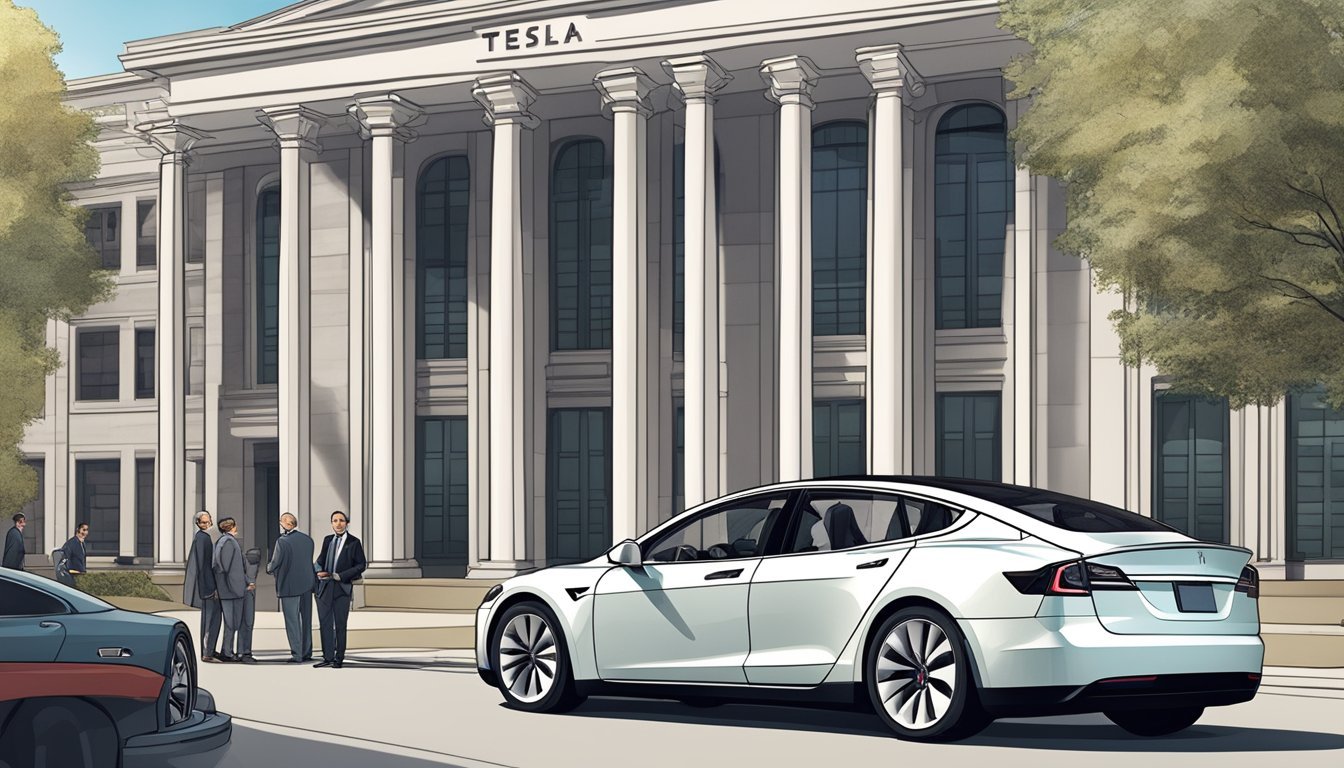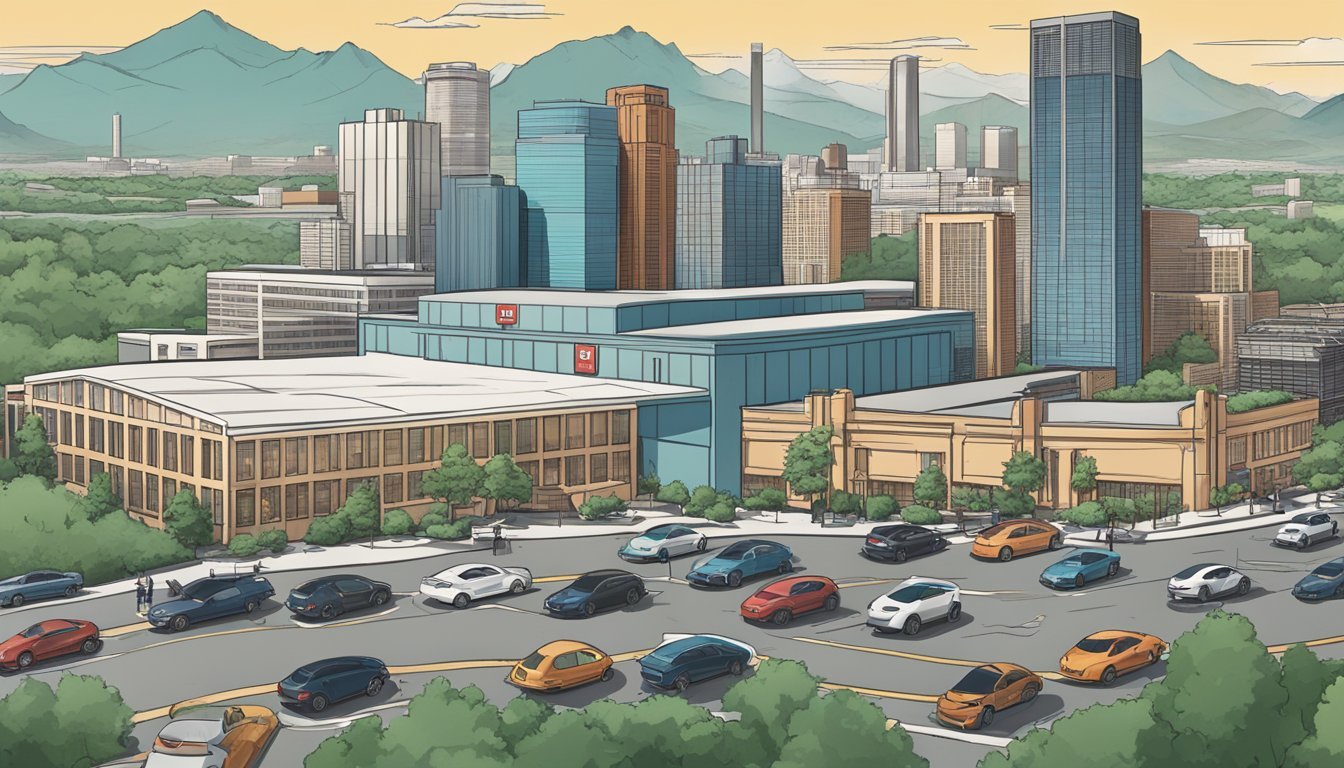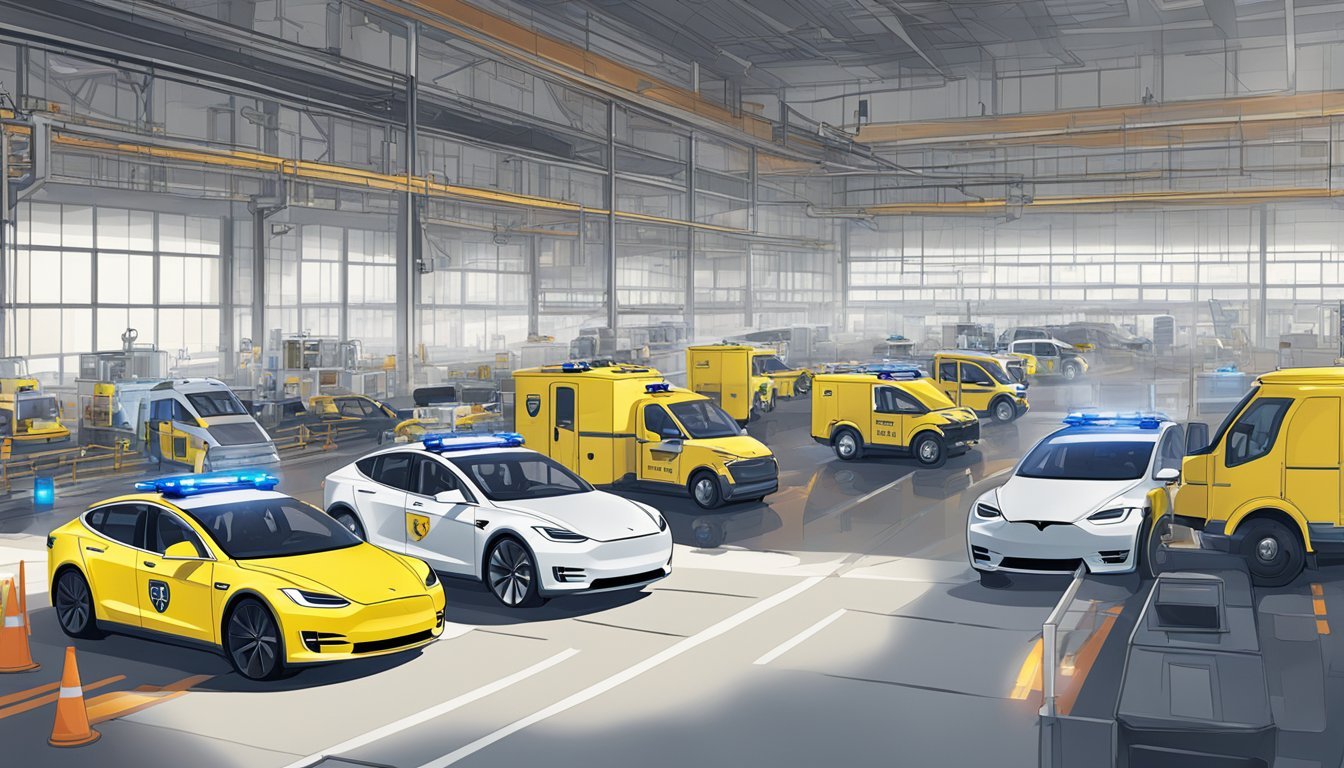Tesla Austin Incident: Giga Texas Under Fire After Alarming Safety Reports!
Tesla's Gigafactory in Austin, Texas has faced scrutiny over workplace safety concerns. Recent reports highlight a series of incidents at the facility, ranging from minor injuries to more serious accidents. The Austin plant, known as Giga Texas, has seen one injury for every 21 workers in 2022, according to data analyzed by industry observers.
These incidents have caught the attention of regulators and safety advocates. The Occupational Safety and Health Administration (OSHA) launched an investigation following a worker's death at the factory in August 2024. While details of this specific case remain limited, it has reignited discussions about employee well-being at Tesla's manufacturing sites.
Tesla's rapid expansion and innovative production methods have been praised for advancing electric vehicle technology. Yet, these safety issues raise questions about the balance between fast-paced manufacturing and worker protection. As investigations continue, many are watching to see how Tesla will address these concerns and improve safety measures at Giga Texas.
Background on Tesla in Austin
Tesla established its massive Gigafactory in Austin, Texas in 2022. The facility, officially named Giga Texas, is located on Tesla Road in eastern Travis County.
Spanning over 10 million square feet, Giga Texas is one of Tesla's largest manufacturing plants globally. It produces the Model Y electric vehicle and serves as the company's new corporate headquarters.
The Austin Gigafactory represents a significant investment for Tesla, reportedly costing over $1 billion to construct. Its development was supported by local tax incentives and promises of job creation.
Elon Musk, Tesla's CEO, announced the selection of Austin for the new Gigafactory in July 2020. Construction began shortly after and progressed rapidly despite challenges posed by the COVID-19 pandemic.
Giga Texas employs thousands of workers across various roles, from assembly line technicians to engineers and administrative staff. The factory has become a major economic driver for the Austin area since opening.
Tesla's presence has attracted other technology companies and suppliers to the region, further boosting Austin's growing reputation as a tech hub. The Gigafactory's impact extends beyond direct employment, influencing local infrastructure and housing markets.
The Incident at Tesla's Austin Facility
A worker's death at Tesla's Gigafactory in Austin prompted an investigation by the Occupational Safety and Health Administration (OSHA). The incident raised concerns about workplace safety at the facility.
Initial Reports and Response
On August 1, 2024, emergency services responded to a call at Tesla's Austin Gigafactory around 8:30 AM. Austin-Travis County EMS arrived on the scene to treat an adult patient in cardiac arrest. The patient was quickly transported to Dell Seton Medical Center in critical, life-threatening condition.
Travis County Sheriff's Office also responded to the incident. Tesla immediately notified OSHA, triggering an official investigation into the circumstances surrounding the event. The company suspended operations in the affected area to facilitate the inquiry.
Victims and Immediate Actions
The identity of the worker was not immediately disclosed, respecting privacy concerns. Tesla's management expressed condolences to the family and coworkers of the deceased. The company initiated an internal review of safety protocols and procedures at the Gigafactory.
Counseling services were made available to employees affected by the incident. Tesla also announced plans for a comprehensive safety audit across all departments. The company pledged full cooperation with OSHA investigators to determine the cause and prevent future occurrences.
Official Investigations
Multiple agencies launched inquiries into safety concerns at Tesla's Austin Gigafactory following reports of workplace incidents. These investigations aimed to assess compliance with regulations and determine if any violations occurred.
Occupational Safety and Health Administration's Role
OSHA initiated an investigation into worker safety at Tesla's Austin Gigafactory. The agency responded to reports of injuries, including a robot-related incident and an explosion. OSHA's probe focused on evaluating workplace conditions, safety protocols, and potential violations of federal safety standards.
Investigators examined injury logs, interviewed employees, and inspected the facility. They looked into claims of inadequate training, insufficient protective equipment, and hazardous working conditions. OSHA's findings could result in citations, fines, or mandated safety improvements.
Travis County Sheriff's Office Involvement
The Travis County Sheriff's Office participated in investigating serious incidents at the Tesla plant. They responded to reports of workplace accidents, including falls involving contractors and other injuries.
Deputies collected statements from witnesses and gathered evidence at the scene. They coordinated with other agencies to ensure a thorough examination of each reported incident. The Sheriff's Office's involvement helped determine if any criminal negligence occurred and supported broader efforts to improve worker safety at the facility.
Worker Safety and Historical Concerns
Tesla's Austin Gigafactory has faced scrutiny over worker safety issues. Reports of injuries and hazardous conditions have raised questions about the company's commitment to employee wellbeing.
Past Reports of Unsafe Conditions
The Austin Gigafactory has seen numerous safety incidents. In 2022, one out of every 21 workers reportedly suffered injuries. Specific cases include a robot clawing a worker and an explosion in the metal casting area.
An aluminum casting machine explosion led to injuries. Some workers experienced concussions, with one requiring 85 days to recover. Another incident involved a worker's ankle getting entangled under a cart.
Federal regulators have taken notice. The Occupational Safety and Health Administration (OSHA) investigated safety violations related to hazardous chemicals on the Cybertruck production line.
Comparison with Fremont Factory
Tesla's Fremont Factory in California has also faced safety concerns. Both facilities have seen reports of unsafe working conditions and injury incidents.
The Fremont plant previously drew criticism for its injury rates. Some improvements were made over time, but concerns persisted.
Austin's Gigafactory, being newer, was expected to have better safety measures. However, recent reports suggest similar issues may be occurring at both locations.
OSHA has investigated both factories. The agency's involvement indicates ongoing concerns about worker safety across Tesla's manufacturing sites.
Legal and Regulatory Implications
The Tesla Austin incident has sparked scrutiny from regulatory bodies and raised questions about potential legal consequences. OSHA's involvement and possible legal outcomes are key factors shaping the aftermath of the reported safety violations.
OSHA's Regulatory Jurisdiction
OSHA holds primary jurisdiction over workplace safety at Tesla's Austin facility. The agency has the authority to conduct inspections, issue citations, and impose fines for violations of safety standards. OSHA's regulatory power extends to both Tesla employees and contractors working on-site.
Recent reports indicate multiple safety incidents at the Austin plant, including explosions and robotic arm injuries. These events fall squarely within OSHA's purview and may trigger comprehensive investigations. The agency can assess penalties based on the severity and frequency of violations, potentially reaching tens of thousands of dollars per infraction.
Potential Legal Outcomes
The reported safety issues at Tesla's Austin factory could lead to various legal ramifications. Workers who suffered injuries may file personal injury lawsuits against the company, seeking compensation for medical expenses, lost wages, and pain and suffering.
Class action lawsuits are another possibility if a pattern of negligence is established. These collective legal actions could encompass multiple affected employees or contractors. Tesla might face substantial financial liabilities and reputational damage from such litigation.
Regulatory fines from OSHA could also impact Tesla financially. The company's history of previous OSHA violations may factor into penalty determinations. Compliance orders requiring specific safety improvements could result in operational changes and associated costs for Tesla.
Economic Impact on Austin and Texas
Tesla's Gigafactory in Austin has generated significant economic activity and job creation in Central Texas. The facility has become a major driver of growth for the region's economy and labor market.
Employment Opportunities
Tesla's Austin Gigafactory has directly created thousands of new jobs. As of late 2022, the company reported supporting over 15,000 positions in Travis County through direct employment and contractor roles. These jobs span manufacturing, engineering, and support functions.
The factory has also spurred indirect job creation across the supply chain and service industries. Local businesses have expanded to meet increased demand from Tesla and its workforce. This multiplier effect has boosted overall employment in the Austin metro area.
Tesla is investing in local education and workforce development programs. The company allocates 10% of its annual maintenance and operations taxes to initiatives that enhance employment opportunities in Central Texas.
Local Economic Growth
Tesla's presence has injected billions of dollars into the Central Texas economy. The Gigafactory brought an estimated $2 billion in economic activity to the region by late 2022. This includes capital investments, operational spending, and employee wages circulating in the local economy.
The facility has attracted additional businesses and investment to the area. Suppliers and related companies have expanded or relocated to be near Tesla's operations. This has further accelerated economic growth and diversification in the Austin region.
Property values and tax revenues have increased in areas surrounding the Gigafactory. Local governments have seen their budgets expand, allowing for increased public services and infrastructure improvements.
Community Response
The Tesla Austin incident sparked significant reactions from local residents and organizations. Public health and safety concerns emerged alongside expressions of support for the company's presence in the area.
Public Health and Safety Concerns
Residents near the Tesla Gigafactory voiced worries about potential hazards. The reported hazardous materials incident prompted questions about emergency preparedness and environmental impact. Local environmental groups called for increased transparency from Tesla regarding safety protocols and chemical handling procedures.
Some community members expressed unease about worker safety following reports of injuries at the facility. They urged stricter oversight and regular safety audits. Traffic congestion and noise pollution were additional concerns raised by those living in proximity to the factory.
Local Community Support
Despite safety concerns, many Austin residents continued to back Tesla's presence. The company's economic contributions, including job creation and technological advancement, garnered appreciation from local business leaders and tech enthusiasts.
Community organizations organized informational sessions to educate residents about Tesla's operations and potential benefits. Some local schools partnered with Tesla for STEM education initiatives, fostering positive relationships with families.
Tesla's commitment to renewable energy aligned with Austin's sustainability goals, earning support from environmental advocates. Local politicians highlighted the importance of balancing economic growth with community well-being.
Industry Implications
The Tesla Austin incident highlights critical issues in automotive manufacturing safety and automation. It underscores the need for enhanced protocols and standards as the industry embraces advanced technologies.
Impacts on Automotive Manufacturing
The incident at Tesla's Gigafactory raises concerns about worker safety in highly automated environments. Manufacturers may need to reassess their robotics integration strategies. Some companies could slow automated system deployment to prioritize safety.
Increased scrutiny from regulators is likely. This may lead to more frequent inspections and stricter reporting requirements for factories. Automotive firms may face higher compliance costs.
The event could spur innovation in human-robot collaboration technologies. Manufacturers may invest in advanced sensors and AI to improve machine awareness of human workers.
Advanced Manufacturing Safety Standards
The Tesla incident may accelerate the development of new safety standards for advanced manufacturing. Industry groups and government agencies are likely to collaborate on updated guidelines.
Key areas of focus could include:
Improved emergency stop systems for robotic equipment
Enhanced worker training programs for interacting with automated systems
More rigorous testing protocols for new manufacturing technologies
Some companies may implement virtual reality simulations to train workers on robot safety. Others might adopt wearable devices that alert workers to nearby robotic activity.
These evolving standards could reshape factory floor layouts and workflows across the automotive sector. Manufacturers may need to redesign production lines to create clearer separation between humans and robots.







